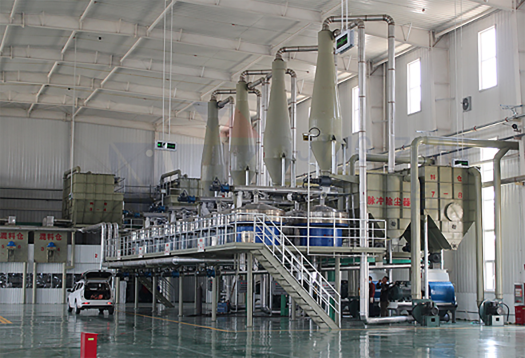
Дек . 15, 2024 12:00 Back to list
hpmc uses in detergent
The Role of Hydroxypropyl Methylcellulose (HPMC) in Detergent Applications
Hydroxypropyl methylcellulose (HPMC) is a versatile cellulose-derived polymer that has gained significant traction in various industries, particularly in the formulation of detergents and cleaning products. This compound, recognized for its non-ionic, biodegradable, and eco-friendly properties, plays a crucial role in enhancing the performance and stability of laundry detergents, dishwashing liquids, and industrial cleaners. This article explores HPMC's uses in the detergent industry, focusing on its characteristics, benefits, and applications.
Characteristics of HPMC
HPMC is a white, odorless, and tasteless powder that is soluble in hot and cold water. Its structure is based on cellulose, modified with hydroxypropyl and methyl groups, which impart unique properties beneficial for detergent formulations. The degree of substitution and molecular weight of HPMC can be tailored to achieve specific viscosity and solubility characteristics, making it suitable for diverse applications. In detergents, HPMC can function as a thickener, film former, and stabilizer, providing a multifunctional ingredient that enhances product efficiency.
Benefits of HPMC in Detergents
1. Thickening Agent One of the primary uses of HPMC in detergent formulations is as a thickening agent. By increasing the viscosity of the product, HPMC ensures better adherence to fabrics during the wash cycle, allowing for improved cleaning performance. A thicker detergent not only provides a premium feel but also helps in preventing product separation in liquid formulations.
2. Stabilization and Emulsification HPMC plays a critical role in stabilizing detergent formulations by preventing phase separation. This stability is essential, especially in multi-component detergents that contain various active ingredients. Additionally, HPMC acts as an emulsifier, allowing for the uniform distribution of oil and water-soluble ingredients. This quality is particularly beneficial in dishwashing liquids, where grease removal is a primary concern.
3. Eco-Friendly and Biodegradable The growing emphasis on sustainability in the detergent industry has led manufacturers to seek eco-friendly ingredients. HPMC is derived from natural cellulose sources and is biodegradable, making it an attractive option for environmentally conscious consumers. Its safe profile allows for its use in sensitive formulations, including those for baby products or hypoallergenic detergents.
hpmc uses in detergent

4. Controlled Release and Performance HPMC can also contribute to the controlled release of active ingredients in detergents. This characteristic ensures that surfactants and enzymes are gradually released during the wash cycle, enhancing their effectiveness in stain removal and fabric care. As a result, HPMC helps improve the overall cleaning efficacy of the detergent while reducing the risk of overuse.
5. Improved Stain Removal The film-forming properties of HPMC enhance the interaction between the detergent and the surface of the fabric. By creating a protective layer, HPMC can help to encapsulate dirt and stains, making it easier for them to be lifted away during the washing process. This leads to superior stain removal capabilities, a feature that consumers heavily prioritize.
Applications of HPMC in Detergent Formulation
HPMC is utilized in various types of detergent formulations. In liquid laundry detergents, it aids in achieving the desired viscosity while improving cleaning performance. In powder detergents, HPMC can enhance the flowability of the granules and prevent caking during storage. Additionally, in dishwashing liquids, it helps maintain product stability and prevents separation, ensuring consistent cleaning action.
Moreover, in industrial cleaning solutions, HPMC can enhance the efficiency of highly concentrated formulations, providing necessary thickening and stabilizing properties, particularly in formulations aimed at grease and oil removal.
Conclusion
Hydroxypropyl methylcellulose stands out as a multifunctional ingredient in the detergent industry, owing to its thickening, stabilizing, and emulsifying properties. As manufacturers continue to innovate and cater to consumer demands for effective and environmentally friendly cleaning products, HPMC’s role is likely to expand. Its adaptability to various formulations makes it an indispensable component, contributing not only to the performance of detergents but also to the growing trend of sustainability in the marketplace. As we progress into an era that prioritizes both efficacy and environmental responsibility, HPMC’s contribution will undoubtedly play a pivotal role in shaping the future of cleaning products.
-
Versatile Hpmc Uses in Different Industries
NewsJun.19,2025
-
Redispersible Powder's Role in Enhancing Durability of Construction Products
NewsJun.19,2025
-
Hydroxyethyl Cellulose Applications Driving Green Industrial Processes
NewsJun.19,2025
-
Exploring Different Redispersible Polymer Powder
NewsJun.19,2025
-
Choosing the Right Mortar Bonding Agent
NewsJun.19,2025
-
Applications and Significance of China Hpmc in Modern Industries
NewsJun.19,2025







